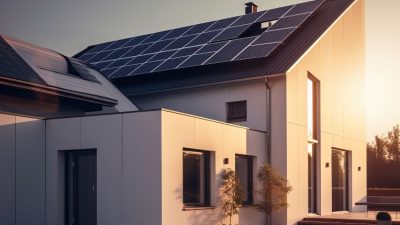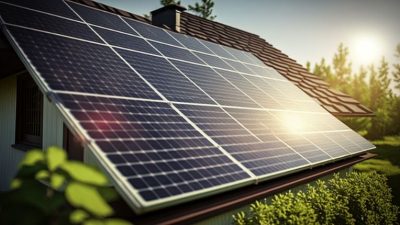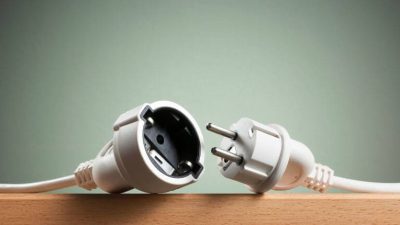Greetings to all solar energy enthusiasts!
In this guide, we will not only unravel what exactly the Universal Supply Point Code is, but also explore its crucial role in the integration of solar energy into the Spanish electricity grid.
Let’s get started!
What is the Universal Supply Point Code?
Imagine the CUPS as the unique identification of your electricity supply point. It is like the DNI of your grid connection.
The Universal Supply Point Code (CUPS) is an alphanumeric code assigned to each electricity supply point in Spain. This code is designed to uniquely identify each electrical installation, whether in homes, companies, industries or other infrastructures.
To understand this better, think of the CUPS as a unique label that is assigned to each household, business or building. This label contains vital information about the supply point, such as the exact address, the type of supply, the contracted power and other relevant details.
CUPS is central to the efficient management of the electricity system, as it allows utilities and regulators to identify and track each supply point accurately. This facilitates tasks such as billing, technical troubleshooting and energy demand management.
It is therefore a vital tool in the operation of the Spanish electricity system, ensuring that each supply point is properly identified and efficiently managed.
Characteristics and structure of the CUPS
The Code shares a number of common characteristics that make it unique and fundamental in the identification of access points to the electricity and gas network. Here are the main ones:
Starting with “ES”: All CUPS codes in Spain start with the letters “ES”, indicating the country of origin of the electricity or gas supply.
Alphanumeric sequence: The CUPS consists of 20 alphanumeric characters for electricity and 22 for gas. Each of these characters represents a specific access point to the electricity or gas network. The first two characters designate the country, the next 4 characters designate the distribution company, followed by free allocation and error control digits.
On-bill display: The CUPS is detailed on your electricity or gas bill, allowing you to easily identify it and verify its accuracy.
Permanence: The Code is permanent and unique to each installation. This means that it will not change unless you make significant modifications to your electrical or gas connection.
Identification of the home or business: The CUPS uniquely identifies your home or business in the electricity or gas network. If you move house, you will change your CUPS, as each installation has its own unique code.
Example:
Looking at the sequence of a code, it may look like the following: “EN 1234 ABCD56789012345678” for electricity and “EN 1234 ABCD5678901234567890” for gas.
These combinations reflect the standard structure, where “EN” denotes the country, followed by a specific series of alphanumeric characters identifying the supply point.
What is CUPS used for?
The Universal Supply Point Code plays a fundamental role in the efficient operation of the Spanish electricity system. Its uses are varied and essential for different actors in the energy sector.
- Unique identification: The CUPS provides a unique identification for each electricity supply point in Spain. This makes it easier for utilities, regulators and other industry players to locate and manage each installation.
- Billing and contract management: The CUPS is key in electricity billing processes and in the management of supply contracts. It enables the precise association of each electricity consumption with its corresponding supply point, which facilitates the preparation of invoices and the management of supply contracts.
- Grid management: With CUPS, utilities can efficiently monitor and manage the electricity grid. This includes detecting and resolving technical problems, planning infrastructure investments and managing energy demand.
- Signing up or changing the contract holder: These procedures include the process of signing up for electricity or natural gas, changing the electricity or gas company, changing the contract holder, adjusting the contract conditions (such as the contracted power, tariff or bank details), as well as applying for the social bonus.
- Regulatory compliance: The CUPS also fulfils a regulatory function by ensuring that each supply point is properly registered and complies with the legal and regulatory requirements of the electricity sector.
How is a CUPS assigned?
The allocation of the Universal Supply Point Code follows a specific process involving different actors within the electricity sector.
Registration of the installation: The first step in assigning a CUPS is the registration of the electrical installation in the Administrative Register of Electricity Distributors (RADE). This is done when a new electrical connection is made or an existing one is modified.
Application to the distribution company: Once the installation has been registered, the holder of the electricity supply must request the CUPS from the electricity distribution company in their area. This request can be made through the distributor’s customer service channels.
Assignment by the distribution company: The distribution company is responsible for assigning the CUPS to each supply point. Once the holder’s request has been received, the distribution company generates and assigns a unique CUPS for the corresponding installation.
Communication to the holder: Once assigned, the distributor communicates the code to the holder of the electricity supply. This can be done by e-mail, post or other means of communication.
It is important to note that the CUPS is unique for each supply point and does not change even if the owner of the electricity supply changes supplier. In addition, the CUPS is associated with the specific address of the electrical installation, so it can also change if major modifications are made to it.
Who needs a CUPS?
The Universal Supply Point Code (CUPS) is required forany person or entity that has an active electricity connection in Spain. This includes a wide range of users, from households and small businesses to large industries and public bodies.
Households: All households with electricity supply need a CUPS. This includes main dwellings as well as second homes, flats, rural houses, among others.
Companies and businesses: Companies, shops and businesses of any size that require electricity for their operation also need a CUPS. This ranges from small establishments to large corporations.
Industries: Industries, factories and production plants that use electrical energy in their production processes also require a CUPS. These can be sectors such as automotive, food, textile, among others.
Public buildings: Public buildings, such as schools, hospitals, government offices and other public bodies, need a CUPS for their electricity supply.
Special installations: In addition, certain special installations such as pumping stations, irrigation systems, wind farms, solar plants and other similar infrastructure also require a CUPS.
How and where is the CUPS consulted?
Querying the Code is a simple process that can be done in a number of ways, providing flexibility and accessibility to users.
Electricity bills: One of the most common ways to look up the CUPS is through electricity bills. The code is usually printed on bills issued by the electricity company and can be found in a prominent place along with other account details.
Contacting the distributor: Users can also obtain their code by directly contacting the electricity distribution company in their area. Through the distributor’s customer service channels, such as the customer service telephone number or its website, users can request information about their CUPS.
Online portals: Some electricity companies offer online portals where users can manage their account and obtain information about their electricity supply, including the CUPS. By logging into the utility’s web portal, users can easily find their Universal Supply Point Code.
Mobile applications: Some utilities also offer mobile applications that allow users to manage their account and access relevant information about their electricity supply, including the CUPS. Through these apps, users can check their Universal Supply Point Code anytime, anywhere.
Counters
Key questions about the Universal Point of Supply Code:
What is the CUPS? It is a unique alphanumeric code assigned to each electricity supply point in Spain, which serves to identify each electrical installation.
What is it used for? It is used for unique supply point identification, billing and contract management, grid management and regulatory compliance.
How is it assigned? It is assigned after registering the electrical installation in the RADE, requesting it from the distribution company, which then assigns it and notifies the holder of the supply.
Who needs a CUPS? Any person or entity with an active electricity connection in Spain, including households, businesses, industry, public buildings and special installations.
How can I check my CUPS? It can be consulted on electricity bills, by contacting the distributor, through online portals or mobile applications of the electricity company.
Does the CUPS change if I change supplier? No, the code is unique for each supply point and remains the same even if you change supplier.
What do I do if I don’t know my CUPS? You can find it on your electricity bill or by contacting your electricity distribution company.
Is the CUPS necessary to register electricity? Yes, it is necessary to identify the supply point in the process of registering electricity or making any contractual change.
At SolarMente we are committed to helping you take control of your energy consumption and explore more sustainable options. We invite you to calculate your potential energy savings using our online calculator, where you can discover how solar energy can become a smart and cost-effective option for your home or business.














